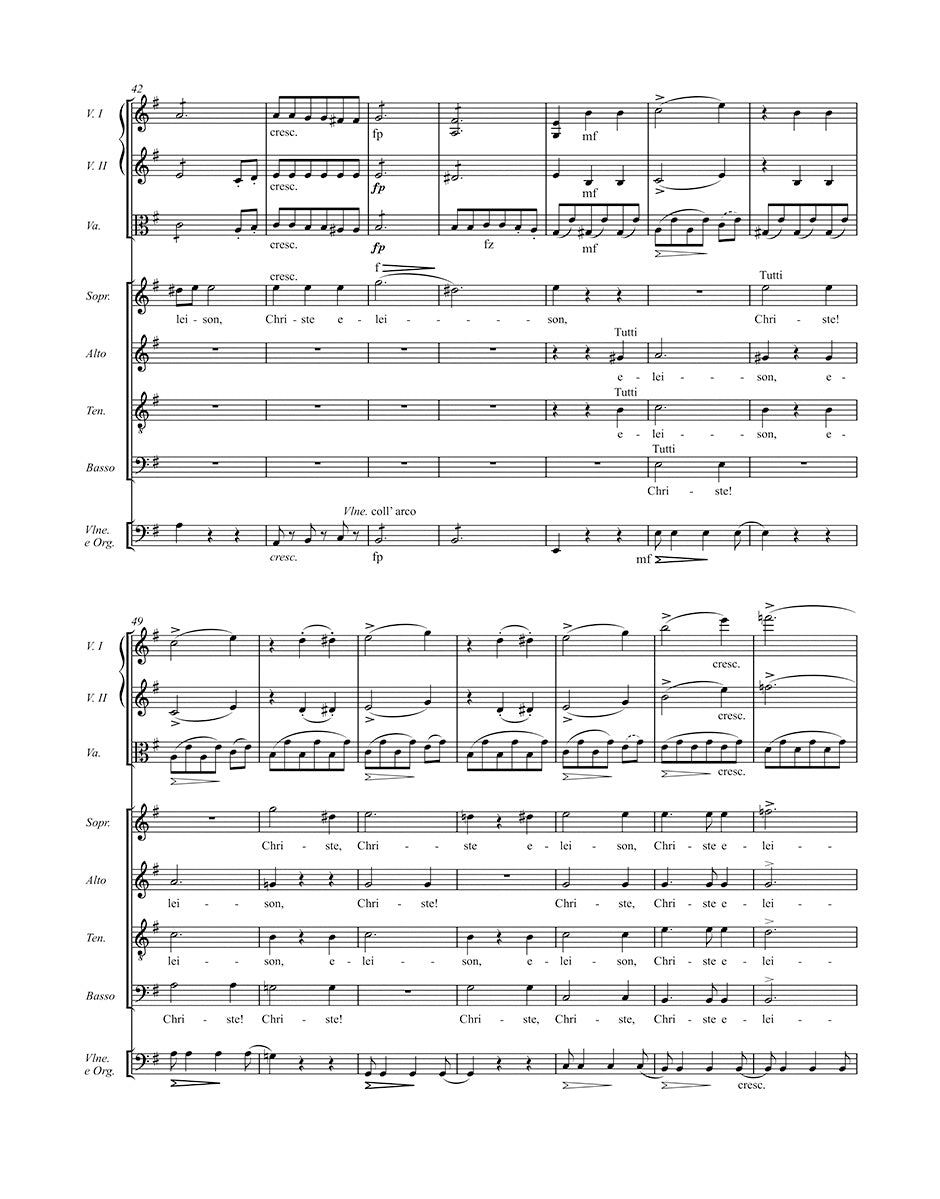Schubert: Mass in G Major, D 167
New Schubert Edition I/1b
In stock and typically ships within 1 business day.
- Composer: Franz Schubert (1797-1828)
- Editor: Christine Martin
- Instrumentation: Organ, SATB Choir, String Orchestra
- Work: Mass No. 2 in G Major, D 167
- Binding: Hardcover
- Work Language: Latin
- ISMN:
- Size: 10.2 x 13.0 inches
- Pages: 135
- Urtext / Critical Edition
Description
Franz Schubert's Mass in G Major (D 167) was composed in 1815 for his home parish in Vienna-Lichtenthal. It was initially intended as a Missa brevis with string orchestra and organ, but was soon supplemented by two trumpets and timpani ad libitum for more festive occasions. This instrumentation is documented in a set of parts that Schubert himself wrote shortly after his full score was completed. Numerous other copies of parts from Schubert's circle prove that the composer continued to experiment with the form and scoring of the mass during and after the first performances and adapted it to the respective performance conditions. Even today, the Mass in G Major is one of his most popular and most frequently performed compositions.
This "New Schubert Edition" volume includes the work in its first version for strings for the first time. Furthermore, it contains the second version with trumpets and timpani which, in addition to the altered scoring, also includes numerous Minor changes to the musical text. The appendix offers two variants of individual movements from Viennese part copies, which Schubert most probably would also have tolerated. in the Foreword, Christine Martin places the mass and its various versions in the context of Viennese church music of the early 19th century and comments on references to the historical performance practice of the mass, which emerge from contemporary sources.
In addition to a mixed four-part choir, string orchestra and organ, the scoring includes three solo voices (soprano, tenor and bass) and, in the second version, two trumpets and timpani ad libitum.
Publishers use a lot of words to describe what they sell, and we know it can be confusing. We've tried to be as clear as possible to make sure you get exactly what you are looking for. Below are descriptions of the terms that we use to describe the various formats that music often comes in.
Choral Score
A score for vocalists that only contains the vocal lines. The instrumental parts are not there for reference. Generally, cheaper than a vocal score and requires multiple copies for purchase.
Facsimile
Reproductions of the original hand-written scores from the composer.
Full Score
For ensemble music, this indicates that the edition contains all parts on a single system (there are not separate parts for each player). In larger ensembles, this is for the conductor.
Hardcover
Hardbound. Generally either linen-covered or half-leather.
Orchestral Parts
Similar to a wind set, this is a collection of parts. In the case of strings, the numbers listed are the number of copies included, though generally these are available individually (often with minimum quantities required).
Paperback
When publishers offer multiple bindings (e.g. hardcover) or study scores, this is the "standard" version. If you're planning to play the music, this is probably what you want.
Performance / Playing Score
A score of the music containing all parts on one system, intended for players to share. There are not separate parts for each player.
Set of Parts
For ensemble music, this indicates that there are separate individual parts for each player.
Solo Part with Piano Reduction
For solo pieces with orchestra, this is a version that contains a piano reduction of the orchestra parts. For piano pieces, two copies are typically needed for performance.
Study Score
A small (think choral size) copy of the complete score meant for studying, and not playing. They make great add-ons when learning concertos and small chamber works.
Vocal Score
A score prepared for vocalists that includes the piano/organ part or a reduction of the instrumental parts.
Wind Set
For orchestral music, this is a collection of wind and percussion parts. The specific quantities of each instrument are notated.
With Audio
In addition to the printed music, the edition contains recordings of the pieces. This may be an included CD, or access to files on the internet.
With / Without Fingering (Markings)
Some publishers prepare two copies - a pure Urtext edition that includes no fingering (or bowing) suggestions and a lightly edited version that includes a minimal number of editorial markings.







